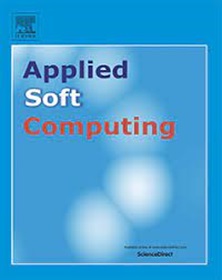Heterogeneous graph neural network with hierarchical attention for group-aware paper recommendation in scientific social networks
IF 7.2
1区 计算机科学
Q1 COMPUTER SCIENCE, ARTIFICIAL INTELLIGENCE
引用次数: 0
Abstract
In recent years, the academic groups established in Scientific Social Networks (SSNs) have not only facilitated collaboration among researchers but also enriched the relations in SSNs, providing valuable information for paper recommendation tasks. However, existing paper recommendation methods rarely consider group information and they fail to fully leverage the group information due to the heterogeneous and complex relations between researchers, papers, and groups. In this paper, a heterogeneous graph neural network with hierarchical attention, named HHA-GPR, is proposed for group-aware paper recommendation. Firstly, a heterogeneous graph is constructed based on the interactions of researchers, papers, and groups in SSNs. Secondly, a random walk-based sampling strategy is utilized to sample highly correlated heterogeneous neighbors for researchers and papers. Thirdly, a hierarchical attention network with intra-type and inter-type attention mechanisms is designed to aggregate the sampled neighbors and comprehensively model the complex relations among the heterogeneous neighbors. More specifically, an intra-type attention mechanism is introduced to aggregate the neighbors of the same type, and an inter-type attention mechanism is employed to combine the embeddings of different types to form the ultimate node embedding. Extensive experiments are conducted on the real-world CiteULike and AMiner datasets, and the experimental results demonstrate that our proposed method outperforms other benchmark methods with an average improvement of 5.3 % in Precision, 5.6 % in Recall, and 5.1 % in Normalized Discounted Cumulative Gain (NDCG) across both datasets.
用于科学社交网络中群体感知论文推荐的分层关注异构图神经网络
近年来,在科学社交网络(SSN)中建立的学术团体不仅促进了研究人员之间的合作,还丰富了SSN中的关系,为论文推荐任务提供了有价值的信息。然而,现有的论文推荐方法很少考虑群体信息,而且由于研究人员、论文和群体之间的关系异构且复杂,这些方法无法充分利用群体信息。本文提出了一种具有分层注意力的异构图神经网络,命名为 HHA-GPR,用于群体感知的论文推荐。首先,根据 SSN 中研究人员、论文和组之间的互动关系构建异构图。其次,利用基于随机漫步的抽样策略,对研究人员和论文的高度相关异质邻居进行抽样。第三,设计一个具有类型内和类型间关注机制的分层关注网络,以聚合抽样邻居并全面模拟异构邻居之间的复杂关系。具体来说,引入了类型内关注机制来聚合同一类型的邻居,并采用类型间关注机制将不同类型的嵌入结合起来,形成最终的节点嵌入。我们在真实世界的 CiteULike 和 AMiner 数据集上进行了广泛的实验,实验结果表明我们提出的方法优于其他基准方法,在这两个数据集上的精确度平均提高了 5.3%,召回率平均提高了 5.6%,归一化折现累积增益(NDCG)平均提高了 5.1%。
本文章由计算机程序翻译,如有差异,请以英文原文为准。
求助全文
约1分钟内获得全文
求助全文
来源期刊

Applied Soft Computing
工程技术-计算机:跨学科应用
CiteScore
15.80
自引率
6.90%
发文量
874
审稿时长
10.9 months
期刊介绍:
Applied Soft Computing is an international journal promoting an integrated view of soft computing to solve real life problems.The focus is to publish the highest quality research in application and convergence of the areas of Fuzzy Logic, Neural Networks, Evolutionary Computing, Rough Sets and other similar techniques to address real world complexities.
Applied Soft Computing is a rolling publication: articles are published as soon as the editor-in-chief has accepted them. Therefore, the web site will continuously be updated with new articles and the publication time will be short.
 求助内容:
求助内容: 应助结果提醒方式:
应助结果提醒方式:


